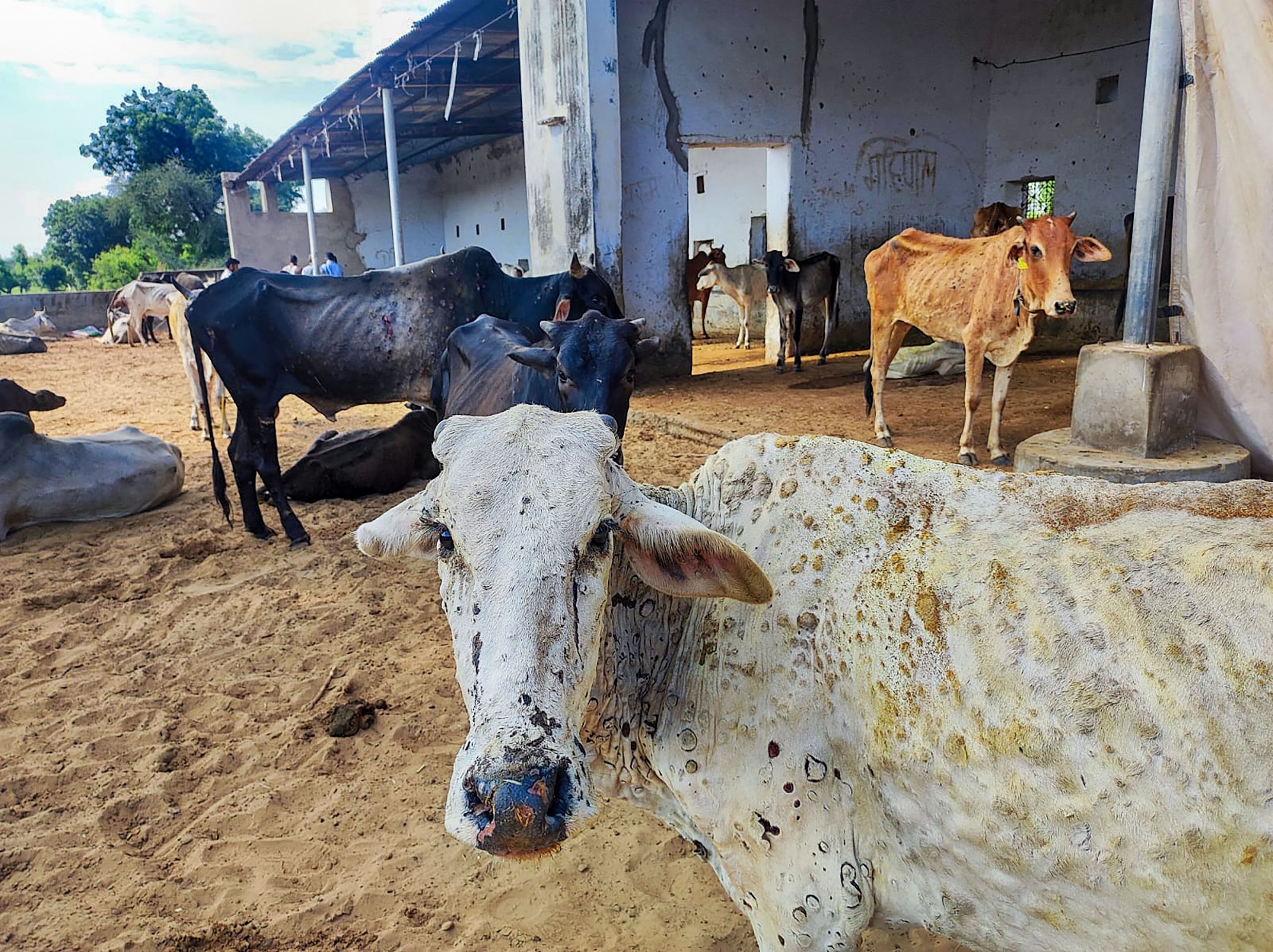The lumpy skin disease (LSD) that began sometime in August this year has led the Bharatiya Janata Party to protest its spread as members of the party took to the streets in Jaipur, Rajasthan on September 20, 2022.
A BJP MLA from the Pushkar constituency in the state had brought a cow to the Rajasthan Assembly to make a statement about the spread of the infectious disease.
The disease primarily affects cattle and began earlier this year and has so far killed thousands of cattle in Punjab, Rajasthan, Maharashtra and Madhya Pradesh.
LSD outbreaks are associated with weather where temperature and humidity are high. While it is prevalent mostly during rainy months in the country, outbreaks can occur in dry months as well. Additionally, the likelihood of outbreaks is increased when cattle find themselves around low-lying areas or near bodies of water during wet months.
Vectors of LSD are primarily blood-sucking insects like mosquitoes and ticks, and even flies. However, not much is known about how much of a role each of these insects play in the transmission of the disease. While outbreaks are sporadic, they are also dependent on the immunity status of the animals, the animal movements and the patterns of rainfall and wind in an area. These factors affect the vector population, in turn affecting transmission.
LSD can also be transmitted through the blood, nasal discharge, semen, saliva and infected cow milk. Calfs can become affected by LSD should they suckle on infected milk.
The disease is caused by a virus called Capripoxvirus and has genetic similarities to the goatpox and sheeppox virus. While the disease is seen primarily in cattle, it has also been seen before in giraffes, water buffalos and impalas.
Like the pox viruses listed above, LSD has a long shelf life, staying in infected tissue for up to 12 days, which requires the slaughter and burning of infected cattle to rid a cow population of the disease.






